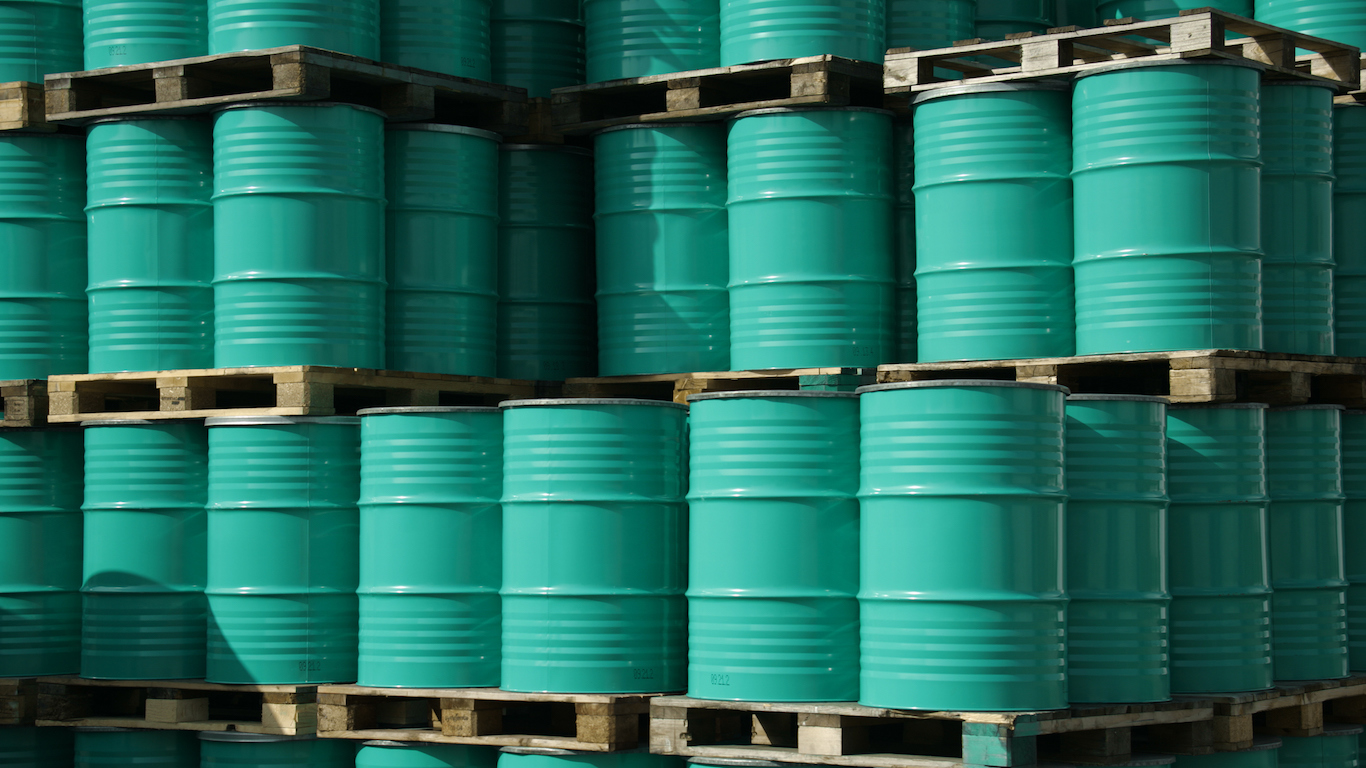Energy
Crude Oil Price Remains Soft Following 10th Straight Weekly Rise

Published:
Last Updated:

The U.S. Energy Information Administration (EIA) released its weekly petroleum status report Wednesday morning, showing that U.S. commercial crude inventories increased by 3.6 million barrels last week, maintaining a total U.S. commercial crude inventory of 450.5 million barrels. The commercial crude inventory is now about 7% higher than the five-year average for this time of year and has risen for 10 consecutive weeks.
Tuesday evening the American Petroleum Institute (API) reported that crude inventories increased by about 3.5 million barrels in the week ending November 23. Gasoline inventories decreased by 2.6 million barrels and distillate stockpiles rose by about 1.2 million barrels. For the same period, analysts expected crude inventories to increase by about 770,000 barrels. Gasoline inventories were seen up about 640,000 barrels and distillate inventories were expected to fall by about 860,000 barrels.
Before the EIA report, benchmark West Texas Intermediate (WTI) crude for January delivery traded up about 0.8% for the day, at around $51.13 a barrel, and it traded at $50.84 shortly after the report’s release. WTI for January delivery opened at $52.09 Wednesday morning, up about 1% from Tuesday’s settlement price of $51.56. The 52-week range on January futures is $50.10 to $76.55.
Crude prices have been falling for nearly two months now as the supply glut that everyone thought was gone has returned to play. U.S. sanctions on Iran lost their bite when the Trump administration granted waivers to eight of the country’s biggest customers. Added to that was increased U.S. production and increases to Saudi and Russian production as well, attributed at least in part to Trump jawboning.
Now the question is whether next week’s OPEC meeting will be able to implement cuts to production that are deep enough to push crude prices higher. Analysts at The Oxford Institute for Energy Studies released a report Wednesday morning that notes the tough choices facing OPEC and its partners in general and Saudi Arabia in particular.
The report focuses on whether the Saudis decide that the decline in demand is structural or speculative. In other words, is the glut in supply due to lower global demand for crude or have hedge funds and other futures buyers just reined in their optimism for continuing price increases? The Oxford Institute researchers conclude:
Saudi Arabia may still not cut output even if it believes the shock is temporary and/or if other producers are not willing to join the cut; or it may decide to cut output even if it believes the shock is more permanent.
Total gasoline inventories decreased by 800,000 barrels last week, according to the EIA, and are now 5% above the five-year average range. U.S. refineries produced about 10.2 million barrels of gasoline a day last week, up by around 200,000 barrels compared with the prior week. Total motor gasoline supplied (the agency’s proxy for demand) averaged 9.2 million barrels a day for the past four weeks, about flat compared with the prior week’s average.
Week over week, U.S. crude oil exports rose by 473,000 barrels a day last week, and U.S. production remained unchanged at 11.7 million barrels a day, its highest level ever. Exports averaged 2.44 million barrels a day last week and have a cumulative daily average for the year of 1.9 million barrels a day, a 103% increase over the year-ago export total.
Distillate inventories jumped by 2.6 million barrels last week and are about 6% below the five-year average range for this time of year. Distillate product supplied averaged 4.2 million barrels a day for the past four weeks, down by about 200,000 barrels compared with the prior week’s average. Distillate production averaged 5.5 million barrels a day last week, up by about 200,000 compared with the prior week’s production.
For the past week, crude imports averaged 8.2 million barrels a day, up by 608,000 compared with the previous week. Refineries were running at 95.6% of capacity, with daily input averaging 17.6 million barrels a day, about 698,000 more than the previous week’s average. Exports of refined products rose by 1.07 million barrels a day last week to about 6.27 million barrels a day.
According to AAA, the current national average pump price per gallon of regular gasoline is $2.527, down more than seven cents from $2.60 a week ago and down by about 29 cents compared with the month-ago price. Last year at this time, a gallon of regular gasoline cost $2.499 on average in the United States.
Here is a look at how share prices for two blue-chip stocks and two exchange-traded funds reacted to this latest report.
Exxon Mobil Corp. (NYSE: XOM) traded up about 0.1%, at $77.11 in a 52-week range of $72.16 to $89.30. Over the past 12 months, Exxon stock has traded down by about 5.6%.
Chevron Corp. (NYSE: CVX) traded up about 0.4%, at $115.61 in a 52-week range of $108.02 to $133.88. As of last night’s close, Chevron shares are trading down about 1.1% over the past year.
The United States Oil ETF (NYSEARCA: USO) traded down about 1.2%, at $10.81 in a 52-week range of $10.64 to $16.24.
The VanEck Vectors Oil Services ETF (NYSEAMERICAN: OIH) traded down about 1.2% at $18.08 in a 52-week range of $17.95 to $29.87. The low was posted after this morning’s report was first posted.
Retirement can be daunting, but it doesn’t need to be.
Imagine having an expert in your corner to help you with your financial goals. Someone to help you determine if you’re ahead, behind, or right on track. With SmartAsset, that’s not just a dream—it’s reality. This free tool connects you with pre-screened financial advisors who work in your best interests. It’s quick, it’s easy, so take the leap today and start planning smarter!
Don’t waste another minute; get started right here and help your retirement dreams become a retirement reality.
Thank you for reading! Have some feedback for us?
Contact the 24/7 Wall St. editorial team.